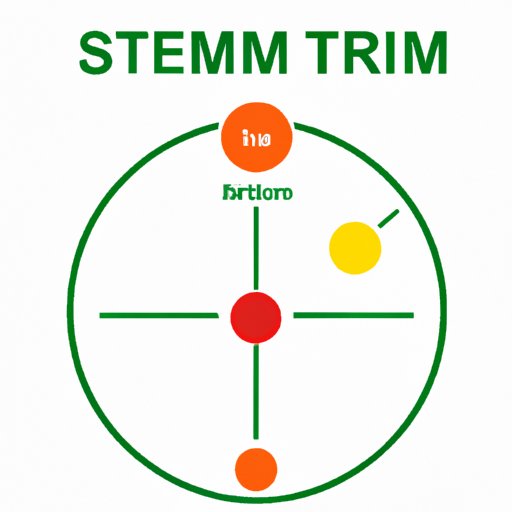Introduction
Have you ever wondered how to find the area of a circle? A circle is a two-dimensional shape that is made up of points equidistant from the center point. The area of a circle is the amount of space that it occupies within its boundaries. Calculating this area is an important concept in geometry and has practical applications in real life. In this article, we will explore how to find the area of a circle and its significance.
Step-by-Step Guide
The formula for finding the area of a circle is: A = πr². This equation takes into account the radius (r) of the circle and applies pi (π), which is a mathematical constant that represents the ratio of a circle’s circumference to its diameter. Below are the steps to follow when calculating a circle’s area based on the formula:
- Measure the radius of the circle
- Square the radius by multiplying it with itself (r²)
- Multiply the squared radius by pi (π) to get the area (A)
For example, let us find the area of a circle with a radius of 5cm:
- Measure the radius: r = 5cm
- Square the radius: r² = 5 x 5 = 25cm²
- Multiply the squared radius by π: A = 25 x π ≈ 78.5cm²
Therefore, the area of the circle is approximately 78.5cm².
The general formula can also be presented as A=πd²/4, where d represents the diameter of the circle, which is two times the radius.
Real-World Examples
There are numerous examples of how calculating the area of a circle can be useful in real-life situations. For instance, if you are repainting a circular room, knowing the area of the circle makes determining the quantity of paint required easier. The same applies to finding the area of a circular garden bed or figuring out how much metal is needed to produce circular pipes.
Additionally, the ability to find the area of a circle is essential in engineering and architecture. Architects need to calculate the area of the circular domes, while engineers use the formula when designing circular roads or airport runways.
Historical Perspective
Although the circle has been known for thousands of years, measuring its area is a more recent concept. Ancient civilizations, such as the Greeks, understood the relationship between the diameter and circumference of a circle, but did not have a precise method for finding its area.
In the 17th century, the calculus of infinitesimals helped to determine the exact area of a circle, and in 1706, mathematician John Machin calculated pi to 100 digits. The current record for determining pi is over 31 trillion digits, made possible by computer technology.
Practical Application
Aside from the standard formula for finding the area of a circle, there are other strategies that can be employed based on the type of circle problem.
- For example, if only the circumference of a circle is given, the formula for the radius (r=c/2π) can be used to find the area of a circle by substituting it into the standard formula for area (A=πr²).
- Another example involves finding the area of a sector, which is a portion of a circle enclosed by two radii and an arc. The formula for the area of a sector is (θ/360) × πr², where θ represents the central angle of the sector.
- Also, if the diameter but not the radius is given, you may use the formula A=πd²/4, where d stands for the diameter, which is two times the radius.
Other formulas can also be used to solve problems related to circles, such as the formula for the circumference of a circle (C=2πr) or the chord formula that determines the distance between two points on a circle.
STEM Education
Teaching children how to find the area of a circle can be an enjoyable and engaging experience, particularly if combined with hands-on activities. Activities such as drawing and measuring circles, using string or ribbon to trace the circumference, or calculating the area of circular objects like plates or balls can all be stimulating and fun. Online resources can provide quizzes, games, and word problems to reinforce the learning process.
A lesson plan can be developed starting with an introduction to the concept of a circle, followed by demonstrations on how to find the radius and diameter, and finally applying the formula to find the area of a circle. The lesson can be customized to the age and skill level of the students and can integrate technology and real-life applications of the concept.
Conclusion
Overall, understanding how to find the area of a circle is a vital concept in mathematics with significant practical applications. It can be used in everyday scenarios such as designing or measuring circular objects and has been integral in architecture and engineering. Additionally, by teaching and engaging children in learning this concept, they can develop essential problem-solving skills and improve their STEM education.
By following the simple steps outlined above, anyone can master the formula for finding the area of a circle and understand its significance.
